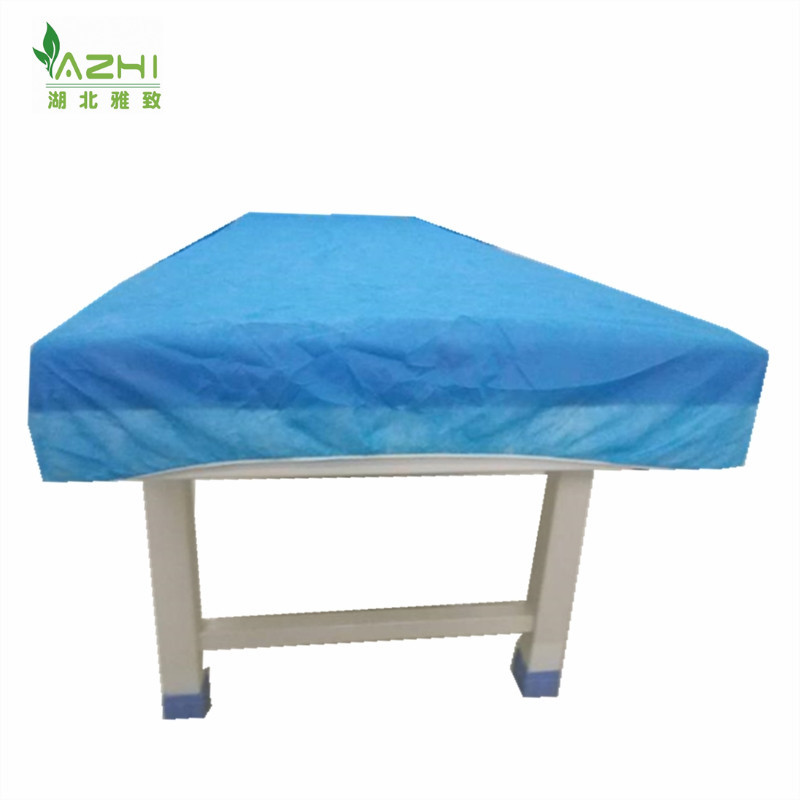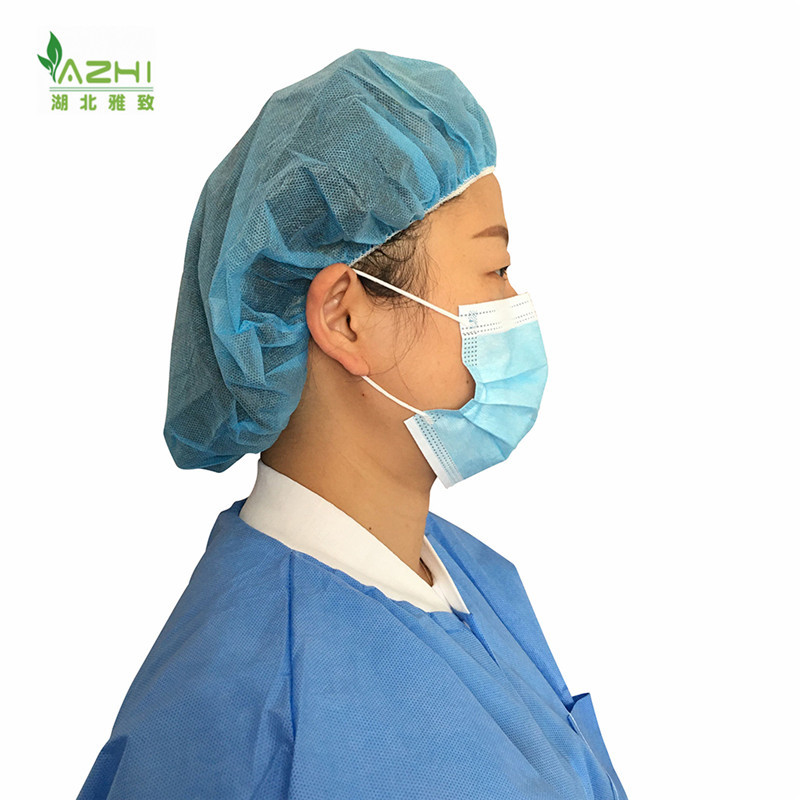News
What Makes Disposable Protective Clothing a Necessity in Healthcare?
Nov 05,2025
What Makes Disposable Protective Clothing a Necessity in Healthcare?
Table of Contents
- 1. Introduction
- 2. The Importance of Disposable Protective Clothing in Healthcare
- 3. Types of Disposable Protective Clothing
- 4. Benefits of Using Disposable Protective Clothing
- 5. Compliance and Regulations in Disposable Protective Gear
- 6. Applications in Various Healthcare Settings
- 7. Sustainability of Disposable Protective Clothing
- 8. The Future of Disposable Protective Clothing in Healthcare
- 9. FAQs
- 10. Conclusion
1. Introduction
In today’s healthcare landscape, the need for **disposable protective clothing** has become paramount. With the rise of infectious diseases and the ongoing threats from viruses, ensuring the safety of both healthcare professionals and patients is critical. Disposable protective clothing serves as a frontline defense mechanism, helping to minimize the risk of contamination and transmission within healthcare environments. This article aims to provide a thorough understanding of why disposable protective clothing is not just beneficial but necessary in the healthcare sector.
2. The Importance of Disposable Protective Clothing in Healthcare
The significance of disposable protective clothing in healthcare cannot be overstated. It plays a vital role in infection control, a fundamental aspect of patient safety. Healthcare-associated infections (HAIs) pose significant risks to patients, particularly those already vulnerable due to underlying conditions. Disposable attire, including gowns, gloves, masks, and face shields, acts as a barrier against pathogens and other harmful substances.
Furthermore, the use of disposable protective clothing simplifies the process of decontamination. Traditional reusable garments can harbor bacteria and require extensive cleaning protocols, which may not eliminate all risks. By using disposable clothing, healthcare providers can ensure that every individual wearing protective gear is starting with a clean slate, thus enhancing infection control measures.
3. Types of Disposable Protective Clothing
The range of **disposable protective clothing** is diverse, catering to various needs within healthcare settings. Below are some of the most common types:
3.1 Disposable Gowns
Disposable gowns provide full-body protection against contaminants, fluids, and infectious agents. They are often made from materials like polyethylene or polypropylene, which are lightweight yet durable.
3.2 Protective Masks
Masks are essential for preventing the inhalation of airborne pathogens. Options range from basic surgical masks to advanced N95 respirators that filter out 95% of airborne particles.
3.3 Gloves
Disposable gloves are crucial for hand hygiene and preventing cross-contamination. They come in various materials, including latex, nitrile, and vinyl, ensuring that healthcare workers can choose options suitable for their tasks.
3.4 Face Shields
Face shields provide added protection for the eyes and face, creating a barrier against sprays and splashes that may occur during medical procedures.
4. Benefits of Using Disposable Protective Clothing
Adopting disposable protective clothing in healthcare offers numerous advantages:
4.1 Enhanced Safety
The primary benefit of disposable protective clothing is safety. With a significant reduction in the risk of contamination, healthcare professionals can perform their duties with greater peace of mind.
4.2 Time Efficiency
Disposable clothing eliminates the need for laundering and sterilization, streamlining operational workflow. Healthcare providers can focus more on patient care rather than cleaning protocols.
4.3 Cost-Effectiveness
Although the upfront cost may seem higher, disposable protective clothing can be cost-effective in the long run. It reduces labor costs associated with cleaning and maintenance.
4.4 Flexibility and Availability
Disposable gear is readily available and can be produced in large quantities. This ensures that healthcare facilities are always equipped with the necessary protection, especially during crisis situations.
5. Compliance and Regulations in Disposable Protective Gear
Compliance with industry regulations is crucial for the use of disposable protective clothing. Organizations such as the Centers for Disease Control and Prevention (CDC) and the Occupational Safety and Health Administration (OSHA) provide guidelines that govern the use of personal protective equipment (PPE) in healthcare settings.
Healthcare facilities must ensure that their disposable protective clothing meets the relevant standards. This includes adequate barrier protection, breathability, comfort, and ease of use. By adhering to these regulations, healthcare organizations can protect their staff and patients while avoiding penalties.
6. Applications in Various Healthcare Settings
The applications of disposable protective clothing span across multiple healthcare settings:
6.1 Hospitals
In hospitals, disposable protective clothing is essential for surgical teams, emergency departments, and isolation units. It helps to contain infections and protects healthcare workers during high-risk procedures.
6.2 Clinics and Outpatient Facilities
Clinics and outpatient facilities utilize disposable gowns and gloves to ensure safety during examinations and minor procedures, reducing the risk of cross-contamination.
6.3 Long-term Care Facilities
In long-term care settings, disposable protective clothing is crucial for protecting vulnerable populations from infections, especially during outbreaks of contagious diseases.
7. Sustainability of Disposable Protective Clothing
While disposable protective clothing offers significant benefits, concerns about sustainability and environmental impact have arisen. The healthcare industry is increasingly recognizing the need to balance safety with ecological responsibility.
Innovations in **sustainable disposable protective clothing**, such as biodegradable materials and recycling programs, are paving the way for environmentally friendly solutions. As healthcare facilities seek to minimize their carbon footprint, these advancements could revolutionize the use of disposable gear.
8. The Future of Disposable Protective Clothing in Healthcare
The future of disposable protective clothing in healthcare is promising. With ongoing advancements in material science and technology, we can expect to see improved designs that enhance comfort and protection.
Additionally, the rise of telemedicine and remote healthcare may influence how disposable protective clothing is utilized. As healthcare delivery evolves, so too will the methods and materials used to protect healthcare professionals and patients.
9. FAQs
9.1 Why is disposable protective clothing necessary in healthcare?
Disposable protective clothing is essential for minimizing the risk of infection and contamination, ensuring the safety of both healthcare professionals and patients.
9.2 What types of disposable protective clothing are commonly used?
Common types include disposable gowns, gloves, masks, and face shields, each designed to provide specific protection.
9.3 Are there regulations governing the use of disposable protective clothing?
Yes, organizations like the CDC and OSHA have guidelines and regulations to ensure that disposable protective clothing meets safety standards.
9.4 What is the environmental impact of disposable protective clothing?
While disposable gear is crucial for safety, it poses environmental challenges. However, innovations in biodegradable materials and recycling programs are addressing these issues.
9.5 How does disposable protective clothing enhance patient care?
By reducing the risk of infections, disposable protective clothing allows healthcare providers to deliver safer and more effective care to patients.
10. Conclusion
In conclusion, disposable protective clothing is undeniably a necessity in healthcare. Its role in infection control, compliance with regulations, and enhancing patient safety cannot be overlooked. As we advance, continued innovation in materials and sustainable practices will shape the future of disposable protective clothing, ensuring that healthcare environments remain safe for both professionals and patients alike. Embracing these practices will not only improve healthcare outcomes but also support the ongoing fight against infectious diseases.
Nov 05,2025
Category:
knowledge
Related Information








 Language
Language English
English Español
Español Português
Português اللغة العربية
اللغة العربية





